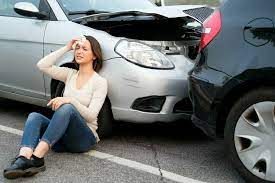What is Underinsured Motorist (UIM) coverage?
If you happen to get into an accident, with an at-fault driver whose liability limits are too low to cover your medical expenses, this is the coverage that has your back. The insurance company of the at-fault driver will most often pay for all damages up to that driver’s policy limits. Without UIM coverage, you would be left paying out of pocket for whatever further damage was incurred. However, if you do have UIM coverage then your insurance company must step in and cover the excess amount up to the limits that you have selected.
Take Marley for example, he does not have UIM coverage and has just been in an accident in which his leg was broken. He was rushed to the hospital, treated, and slapped with a huge medical bill. Unfortunately for Marley the driver that ran into him does not have adequate insurance to pay for Marley’s expenses and Marley does not have UIM coverage so he will be paying that medical bill out of his own pocket. Then look at Jeff, who did purchase UIM coverage, he was in a similar predicament. A driver ran a red light and T-boned Jeff whose back was broken in the accident. Because Jeff had Uninsured Motorist coverage he won’t have to worry about his medical expenses just because the other driver’s insurance won’t cover them.

What is Uninsured Motorist (UM) coverage?
Uninsured Motorist coverage works in much the same way as Underinsured Motorist coverage. The difference is that UM will cover a driver, who is not at fault, in the case that the other driver does not have insurance. It’s estimated that as much as 17% of drivers do not carry liability insurance, and that’s just in Texas! That pans out to almost every two wrecks in ten involving an uninsured motorist.
What are the types of Uninsured and Underinsured Motorist coverage?
- Uninsured/Underinsured Motorist Bodily Injury Coverage (UMBI/UIMBI):
This coverage is designed to protect you and your passengers for medical bills, wages lost due to injury, and pain and suffering caused by the accident if the accident was caused by someone who does not have insurance or who does not have enough insurance. In Texas these two are almost always bundled together and for good reason. Personal injury protection (PIP) may not be enough to keep drivers from needing UMBI/UIMBI if the injuries are severe. UMBI/UIMBI will most likely offer much higher limits than PIP which will ensure you are protected. - Uninsured/Underinsured Motorist Property Damage Coverage (UMPD/UIMPD):
This coverage is what protects your car if someone hits you and doesn’t have enough insurance or does not have insurance at all. UMPD/UIMPD will cover your costs for repair or replacement of your vehicle as well as a rental car and oher out-of-pocket expenses.
Some states require these types of coverage and some do not. Check your policy to make sure you have UM/UIM and UMPD/UIMPD before it’s too late. You can add these coverages at any time, but if you’ve been in an accident and don’t have them then you unfortunately will not be covered in the case that the other driver is uninsured or underinsured. If you’re not sure, schedule a consultation with Zain. He will make sure you understand the details of your policy that insurance companies may not want you to know and give you the best advice to make sure you are protected.

Sources:
“Facts + Statistics: Uninsured motorists https://www.iii.org/fact-statistic/facts-statistics-uninsured-motorists”